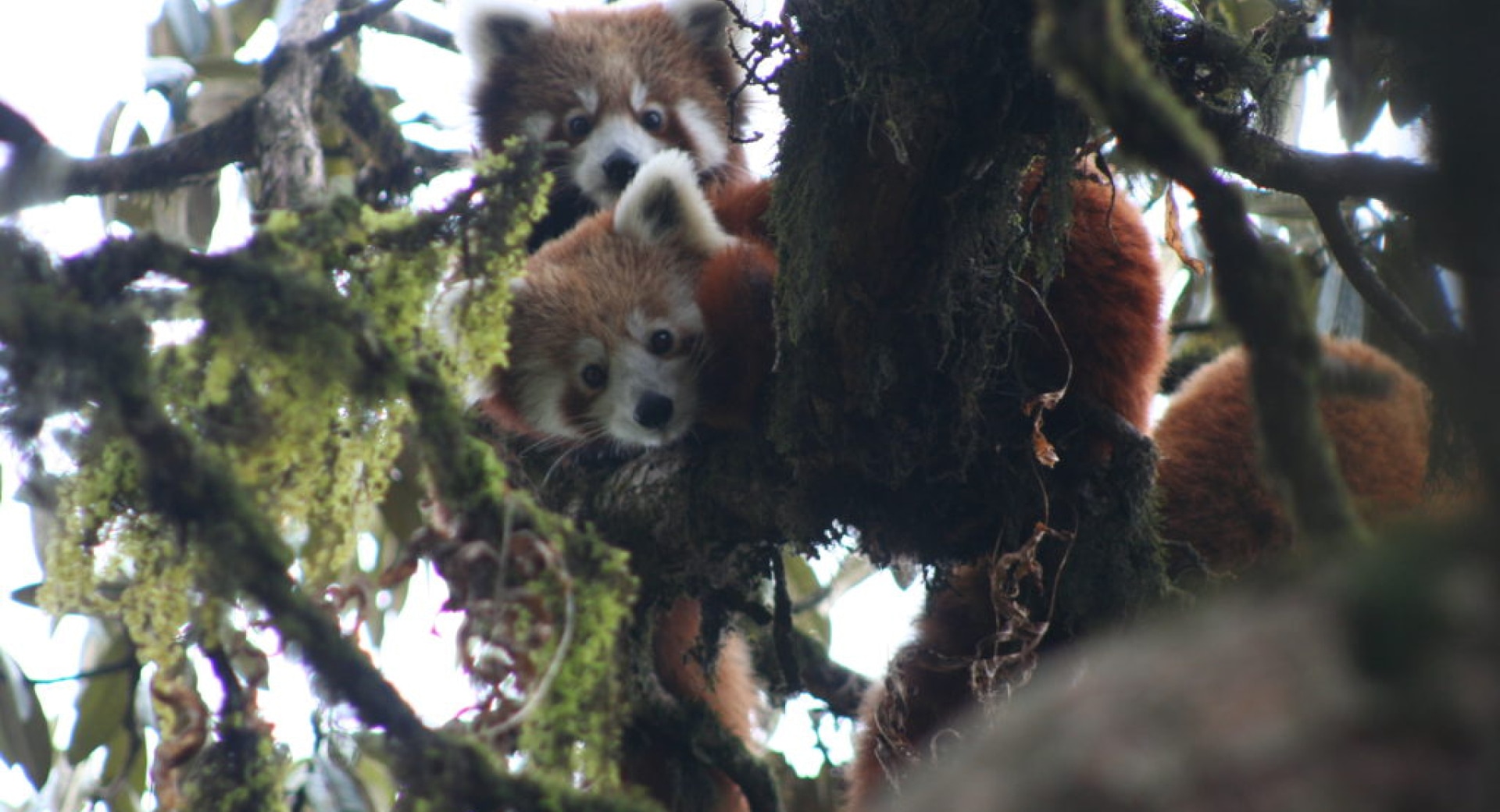Press Release: Ecotrip travelers see increasing numbers of red pandas in Nepal.

Download the full press release here.
Good news can be hard to come by for people working to save threatened and endangered species. That’s why the Red Panda Network (RPN) is delighted to share some heartening news worth celebrating: In 2019, there was a record-high number of red pandas seen on RPN’s ecotrip to Nepal.
Since 2011, RPN has offered ecotrips for travelers who want to immerse themselves in the world of red pandas; experience the culture, natural beauty, and biodiversity of Nepal; and take part in community-based conservation.
Ecotrips support RPN’s conservation efforts and give local communities added incentives to help preserve red pandas and curb habitat loss, which is the biggest threat to red pandas living in Nepal. RPN uses a multi-tiered conservation approach. Of these efforts, ecotourism is emerging as the most effective way to support initiatives, such as Plant a Red Panda Home, that protect and restore the Himalayan forest that red pandas need to survive.
For red pandas, the payoff of RPN’s ecotrips to Nepal is big. What began as one to three red panda sightings per trip, has increased over time. The success rate for seeing red pandas has been 100 percent for RPN ecotrippers since 2017, and eight red pandas were spotted in 2018. Then in 2019, a record-high of ten red pandas—a total of nine cubs (from different litters) and one female red panda—were seen on a 12-day trip.
The increased number of red pandas seen by ecotrippers, combined with reports of more red pandas and wildlife seen in habitat reforested with the support of ecotrip funds, strongly suggests that red panda numbers in Nepal are on the rise.
RPN offers a variety of ecotrips for small groups of travelers. To ensure that red pandas aren't disturbed during ecotrips, RPN follows strict red panda tracking protocols which include no trips during mating and birthing seasons and avoiding repeated visits to a red panda site.
Another tangible benefit of RPN ecotrips is the huge and positive impact it has on the local people and their country’s economy. RPN’s ecotourism funds RPN field research, habitat protection, outreach programs and sustainable livelihood-related activities. Yet, in terms of overall impact of ecotrip funds, the biggest benefit is to the local Himalayan communities.
Healthy red panda populations need to benefit the local people for conservation efforts to succeed. Thanks to RPN’s red panda-based tourism, local communities are able to flourish alongside the increasing red panda populations, so communities are supportive and actively engaged in RPN’s conservation program. Ecotourism gives local residents additional ways to make a living, and tourism-based activities, such as providing hospitality services and acting as nature guides, are the primary source of income for many Nepalese people.
Last but not least, RPN’s ecotrips benefit the ecotrippers themselves. Tawnni Jensen, a traveler on RPN’s 2019 ecotrip, described the trip saying: “I would not have traded this experience for anything! Being among the wonderful people of Nepal and the amazing diversity of the Himalayan foothills was incredible! And ten pandas! Seeing these amazing animals, and seeing signs of a growing population, was unbelievable!”
For lucky travelers like Jensen—and possibly you—a RPN ecotrip is the adventure of a lifetime! We hope you join us for an RPN ecotrip soon!
Holly Alyssa MacCormick
Writing and Communications Volunteer
Red Panda Network
For further information contact:
Terrance Fleming, Development Manager, terrance@redpandanetwork.org
